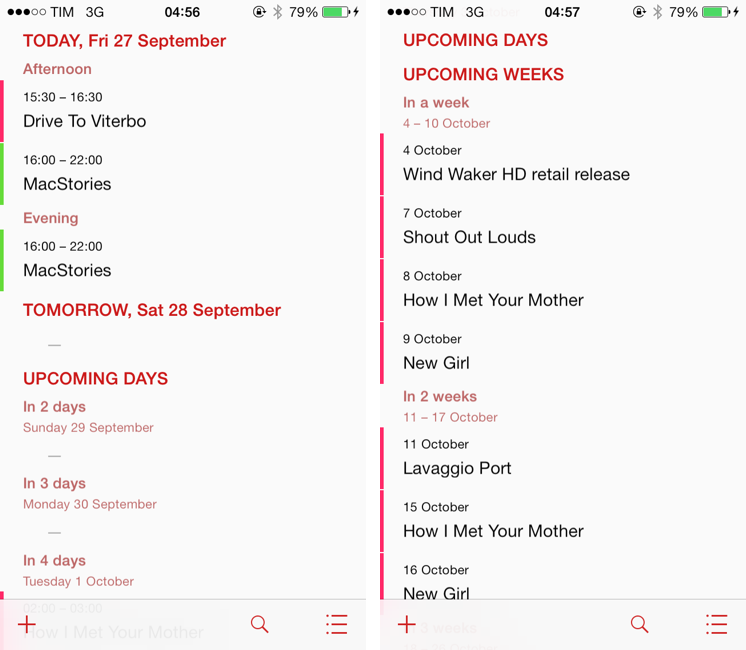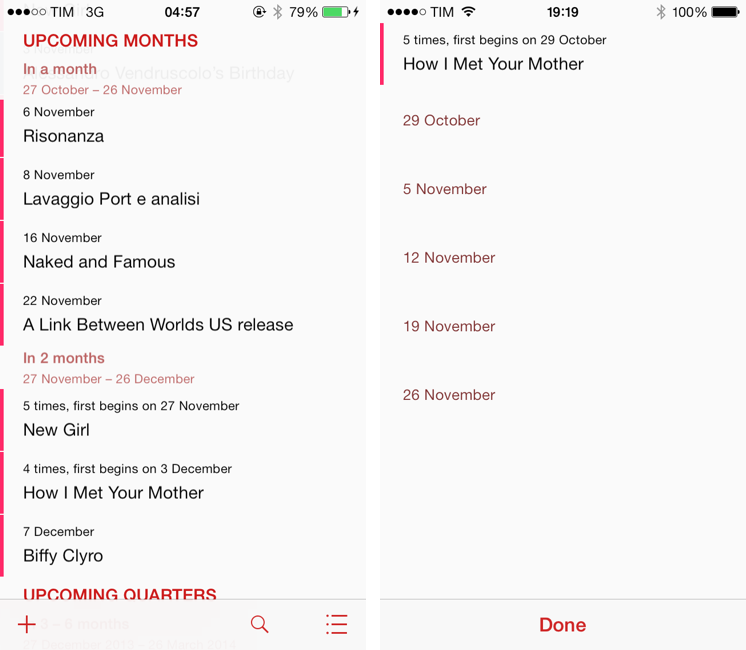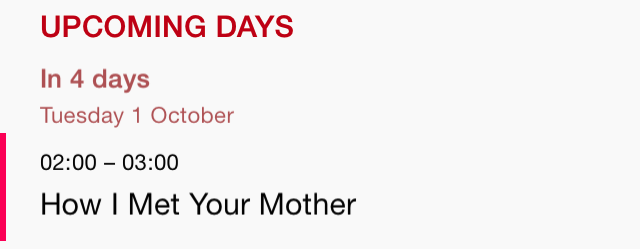In the past few months, I’ve been obsessed with finding the best Calendar and Reminders clients for my iPhone and iPad. While I wouldn’t call myself a calendar power user, I do rely on iCloud Calendar to organize my daily appointments and events that require my complete attention, and I’ve been lured by the simplicity and immediacy of Reminders. As I noted in my article on living with iOS 7, I’ve also been liking the OS’ new Today view in Notification Center, which gives me a summary of all the things – events or reminders – I have to do today.
I don’t like calendar apps that are limited by old rules defined by physical calendars. For instance, what’s the point of showing a full month with past events when our devices know what the current day is? Why showing empty days in views that should list upcoming events? Our devices have a little, powerful silicon brain inside them, and yet so many calendar apps – supposedly, digital assistants for the modern age – are still stuck with concepts and metaphors of two decades ago. This is a topic that other smart people have also touched upon in the past, and I recommend reading this piece by Jason Snell.
Earlier this week I was browsing the App Store and I came across Logacal, a $2.99 iPhone app developed by Czech developer Pavel Doležal. I was intrigued by the app’s clean iOS 7 design and description:
Unlike traditional month, week or day-based calendars, Logacal doesn’t split time equally, but instead depending on how far in the future it is.
And:
Its design is vastly inspired by logarithmic scale that enables you to see and manage your calendar in a very natural and intuitive way.
Now, I’m no expert of logarithmic scales and other high level mathematical theories, but I’m good enough at clicking the Buy button in iTunes and doing some reading on Wikipedia. Apparently, some of our senses operate in a logarithmic fashion, and Pavel’s idea was to represent future days, weeks, months, and years on a scale that gets less granular as you move further in time.
What this means is that Logacal offers a smart visualization of calendar events that I like better than similar offerings in Fantastical or Agenda. The app can read events from all your configured iOS calendars, but not Reminders lists. Once you open the app, you’ll see a timeline that starts with Today and Tomorrow, but then moves to Upcoming Days, Upcoming Weeks, and Upcoming Months. Each section has groupings inside, such as “In 4 days” and “In a week” for the near future, or “In 3–6 Months” for more distant events. Inside each grouping, you’ll see your available events, color-coded with a thin vertical bar on the left to indicate the calendar they belong to. Tap an event, and the default iOS calendar editing view opens; tap a repeating event, and you can see a list of all days when the repeating event will occur.
Logacal’s view is different from any other calendar app I’ve tried and it requires some time to get used to it, but, after a while, I think that the developer is right when he claims that Logacal is more “natural” in its display of events. When I think of the current day, I think of the various parts of it, such as “this morning” and “this afternoon”; Logacal displays these separators in the Today section. When I think of something I have to do next week, I don’t think of “the morning of Tuesday of next week” – I just remember that something is due next week, and then that it’s on Tuesday.
It’s an extremely subtle difference, but Logacal gets it right, and I believe also thanks to its iOS 7-based typographic style: the first data point (upcoming weeks) is displayed in uppercase and bold text, with a smaller but still bold “in a week” below, then the range of days, and last the specific day. Days with no events are hidden as you progress towards the future; keep scrolling, and entire weeks and months will be grouped together, coalescing events into a single group.
Logacal could use more features. There is no Reminders integration, no support for natural language input, and don’t expect the inter-app communication features of Agenda. There’s plenty of room for improvement in terms of additions, not to mention the lack of an iPad version.
If you want your calendar app to adhere to more traditional conventions like month and day views, Logacal isn’t for you. You’ll probably be fine scrolling through days and months in other excellent (and different) apps like Fantastical and Agenda. If, however, you’ve been looking for a more natural way to look at future events on your calendar, Logacal has a unique take on calendar events and I’ve been opening the app regularly.
Logacal is available at $2.99 on the App Store.




